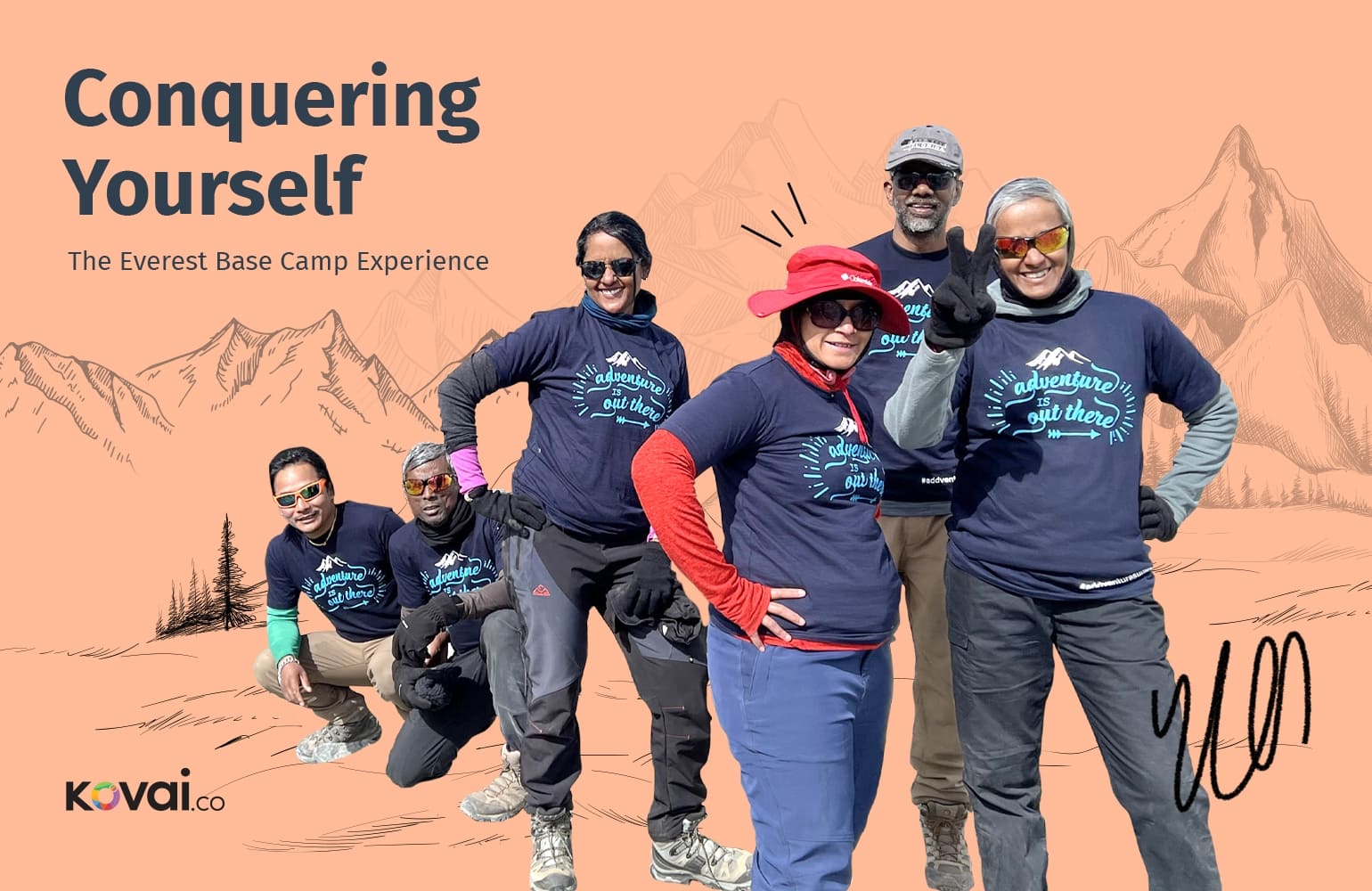Gowri Ramkumar, Vice President, Sales & Customer Success, trekked to the Everest Base Camp in April 2022. She along with her group of five other trekkers, reached the peak after eight days of trekking. She talks about the grueling but life changing experience and the extent of preparation they undertook before embarking on this adventure.
Everest Base Camp
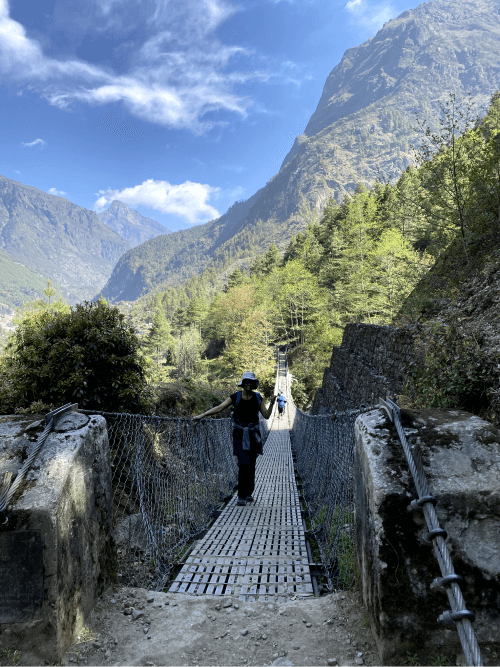
The Everest Base Camp is located 18,513 ft above sea level in Khumbu, Nepal. The trek from Lukla, which follows the footprints of legendary mountaineer Sir Edmund Hillary, is 130 km long and takes 8 to 12 days to complete. The trek, categorized as difficult, offers breathtaking views of the Himalayan Terrain including lush green farmland, dense forest, fast flowing rivers, and glacial pools. It is from this base camp, that the trek to the summit begins.
The Beginning
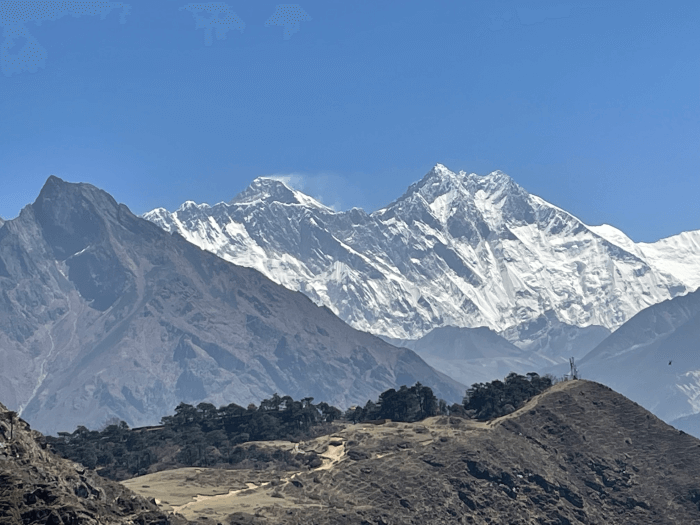
It all began at a get-together at Gowri’s house end-2019. “We were just chatting and discussing the idea of going on a trek together, and then thought why not to Everest Base Camp (EBC)?” she recalls. The get together was with around five families, who have also been in the UK for more than two decades.
“From it sounding crazy initially, by the end of the same night five us decided to take up this challenge. We also decided to give ourselves a year to prepare,” recalls Bindu Kuriakose, another member of the group and a banker with Citibank, London.
While two of the five members, have had some trekking experience including taking up the National Three Peak challenge in UK, the others including Gowri had no prior trekking experience whatsoever. “We had initially planned to go on the trek in November 2020. However, the pandemic and recurring waves led it getting delayed by more than two years,” says Gowri. “But we decided to use the time we had in physically and mentally preparing for the trek,” she adds.
Building Mental and Physical Strength
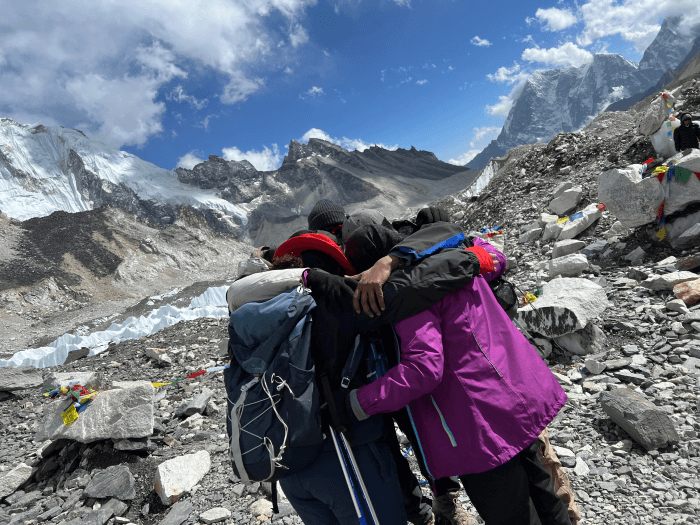
The first step was understanding that our adventure was not a sprint but a marathon. We had to build stamina and endurance, says Gowri. “During the lockdowns, we went on walks for at least 5 km daily and increased it to 10-12 km during weekends. Others worked out focusing on strengthening their core, legs and general physique,” she says. “On some weekends, we also did the National Three Peak challenge as a group, with our families to get an idea of what a trek could be like. But we did one peak a day and not all three within 24 hours,” she adds.
After continuously preparing for two years, Gowri with her group booked her tickets in November 2021 and contacted a trek tour group in Nepal to guide them. “The next two months was probably the most fun and exciting bit about the adventure, because we got to shop for the trek. We were busy researching, making lists and then ordering things online,” says the trekking newbie-Gowri, who is also a self-confessed shopaholic. A group member who had made a trip to India, during those months, had also bought Diamox tablets, a drug that helps handling altitude sickness. “We had the Diamox tablets, first in halves and then a full dose, to check for side effects, but luckily we had none,” says Gowri.
Thriller flight
They landed in Kathmandu on April 14 and then took another flight to the Lukla Airport, the starting point for the trek. “Just landing in the airport was an adventure because it is the World’s tallest tabletop airport and we landed in a 14-seater flight. The runway is so short, that the window for take-off and landing is extremely narrow, so the whole trip started off with a thriller,” she says.
Spartan Accommodation
The group began the ascent on April 15, covering around 400 m of altitude a day over 6-7 hours. “Our breaks were at tea houses which dot the entire route till the base camp itself. However, the facilities and food there is super basic and gets more spartan as you go higher,” she recalls. “While the first tea rooms had a heated hall, individual rooms, and bathrooms, we slowly began losing amenities. As we went higher up, bathrooms did not have mirrors, bars to hang our clothes and eventually only common toilets. The toilets had no hot water either, so we brushed our teeth in water when it was -3 degrees C,” she recalls giggling. “Or we had to pay for hot water,”.
Gowri admits that she and her team, who she considers her family in UK, had underestimated the difficulty level of the trip. “We did not honestly know what we were getting into,”. She says the trip’s difficulty level was 20x of what they expected. “But once you get there and start the trek, at no point despite many difficulties did we consider going back down,” says Gowri.
Handling Low Oxygen Levels
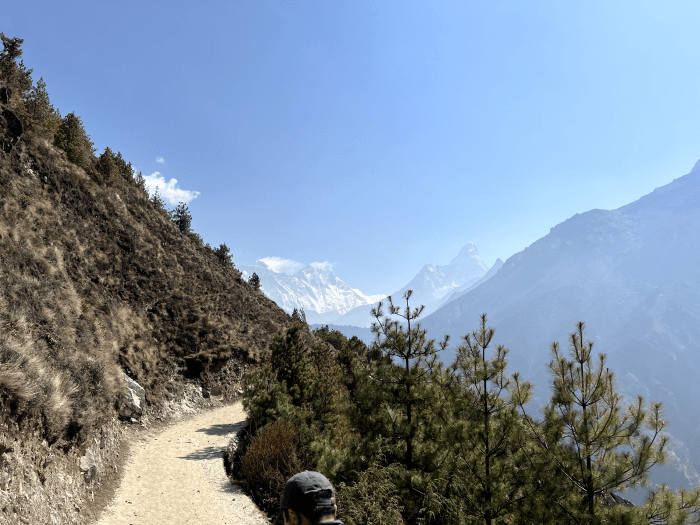
The most challenging part of the trip was handling the altitude sickness. “Few of us developed symptoms like diarrhea, vomiting, cold, cough and fatigue,” recalls Gowri. “Despite the exhaustion, we found ourselves motivating each other, lifting each other’s moods up, encouraging each other to take the next step, which itself felt hard. Thus, at no point did we think we will stop,” she recalls. “In fact, due to falling oxygen levels, even the 6 hours of trekking was extremely challenging. Even basic actions like changing your clothes, tying your shoelaces, or getting something out of our bags was tiring,”.
Trekking Community
However, what charmed and surprised the group the most, was the trekking community they come across at tea houses which include regular trekkers, the guides, and porters. “None of them do just their job or do their jobs for the sake of it,” says Gowri.
The team also realised the rewards of taking things a few hours at a time and working with limited information. “Our guide would only reveal the terrain and plan for the next three hours, despite me bombarding him with questions,” she says with a laugh. “Knowing only information required for the next three hours, prevented us from getting overwhelmed or anxious processing the information. We focussed and took it three hours at a time,”.
Bindhu says “All the porters and tea house owners also when helping us or welcoming us, kept giving us motivational tips. They were so invested in us scaling the peak, though we are probably one group among the thousands they see and guide regularly,”. Gowri says the extent to which the trekking community, all strangers, are so invested in others scaling the peak was heart-warming. “They are extremely helpful and resourceful in giving us tips, even gear etc”.
Scaling The Peak
The group remembers the moment they reached the base camp on April 23. “It was surreal. We all got into a group hug and the literally the next thing we did was call our families, thanking them for their support, spouses for managing the children among other things,” says Gowri. She began the trek downhill and reached Lukla again on April 28.
Post Trek Takeaways
While Gowri’s main takeaway was being able to survive on just 10 kg of luggage for 16 days, the group said they realised their own personal strengths after the trip. “I think we realised that we are all stronger and capable of than we think”. “A week after I returned, I now find myself looking at tasks and targets, which I earlier thought was difficult, and thinking that they are achievable,”.
So, ask our VP if she would ever attempt such a feat again, and she nods slowly. “Maybe,”. “It felt exactly like giving birth. We undergo so much pain for so many hours until the baby is out, but the minute we see the baby, all that pain vanishes and is forgotten. We would do it again too,” says Gowri signing off.

